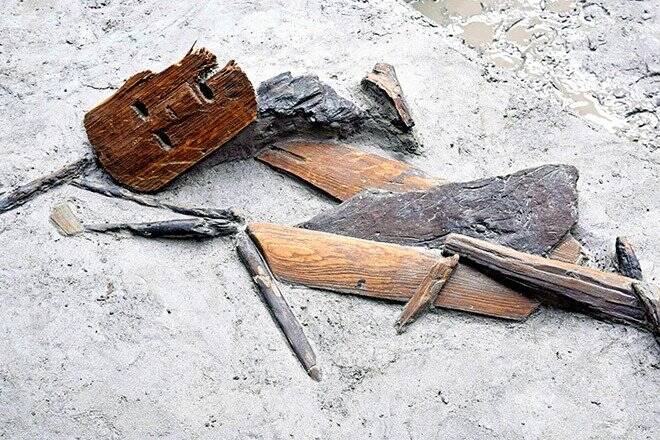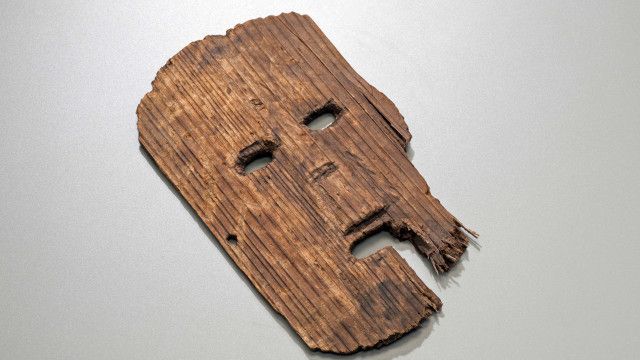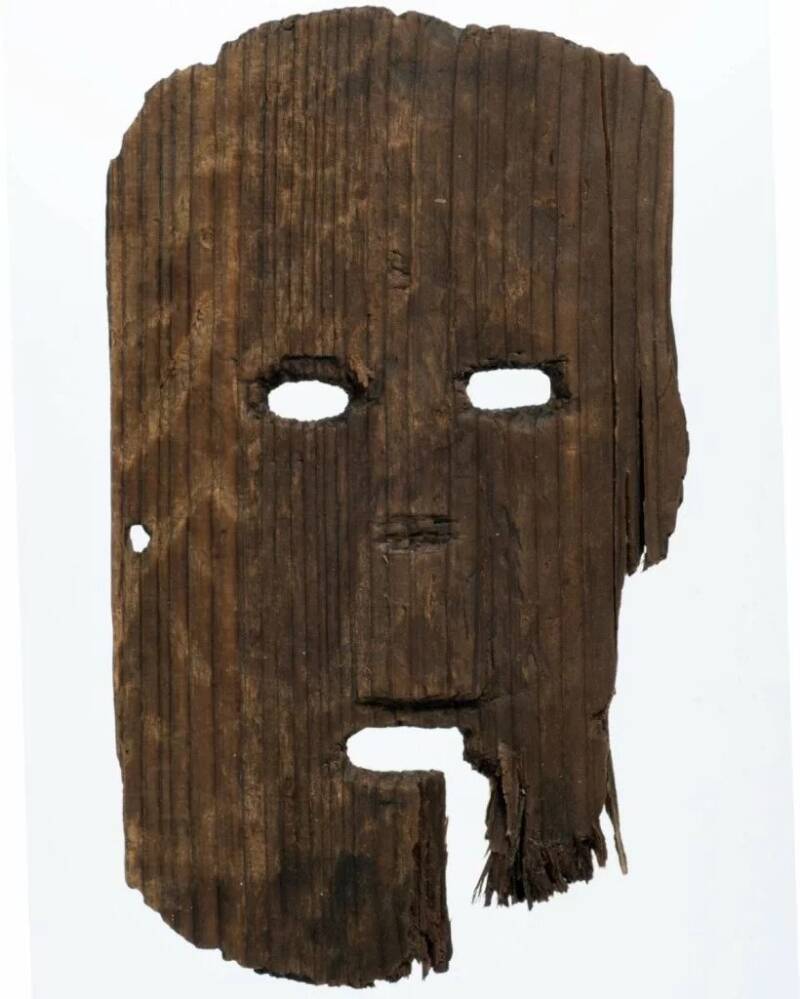In an unexpected development, the extension of the Osaka Monorail has led to the discovery of a remarkable collection of ancient artifacts, including an extraordinarily well-preserved ritual mask estimated to be around 1,800 years old. This finding provides a unique insight into the Yayoi period (300 B.C.E. – 300 C.E.), a significant era in Japanese history characterized by the transition from a hunter-gatherer lifestyle to agriculture.
Unveiling of the Ritual Mask
During the initial excavations for the Osaka Monorail expansion, archaeologists from the Osaka Center for Cultural Heritage uncovered several wooden artifacts, with the ritual mask being the most prominent. Crafted from cedar wood, the mask measures approximately 11 inches in length and seven inches in width. It features openings for the eyes and mouth, along with a perforation on the side, likely intended for fastening with a string.

The mask, which resembles a human face, is thought to have played a crucial role in ancient ceremonial practices. However, its substantial weight suggests it may have been displayed rather than worn. Kaoru Terasawa, director of the Research Center for Makimukugaku in Sakurai City, Nara Prefecture, proposes that the mask represented a deity, potentially symbolizing the authority of Okimi, the leader of the Yamato Kingship.
Historical Context and Importance
The Yayoi period, spanning from 300 B.C.E. to 300 C.E., was a transformative time in Japan’s history. The introduction of wet-rice farming during this period led to the formation of agrarian communities and permanent settlements. This shift brought about profound social changes, including the emergence of distinct social classes and power structures. The Kyoto National Museum notes that this era also saw an increase in conflicts over resources like land and water, evidenced by the discovery of bodies with battle injuries and defensive shields.

The Yamato Kingship, which held power from the third to the seventh century, was particularly influential during this period. Dominant clans, led by figures such as Okimi, exerted influence over local leaders and their ceremonial practices. Terasawa suggests that the Yamato Kingship’s rituals may have inspired the use of the mask in local festivals and ceremonies.
Other Significant Findings and Artifacts
The discovery of this 1,800-year-old mask is not an isolated event. Similar wooden masks from the same era have been previously unearthed, including one from the Makimuku ruins in Nara Prefecture. These masks emphasize the importance of ritualistic practices in ancient Japan.

In addition to the mask, the excavation also revealed other ancient wooden artifacts, such as a wooden water bucket and a charred object resembling a gardening hoe, found 9.5 feet below the surface. These items offer additional insights into the daily life and customs of the Yayoi period.
Conclusion
The discovery of the 1,800-year-old ritual mask during the Osaka Monorail extension project offers an extraordinary glimpse into the Yayoi period. It highlights the significant social and cultural changes that took place as Japan evolved from a hunter-gatherer society to an agrarian one. These artifacts, along with other similar discoveries, deepen our understanding of ancient Japanese rituals and the societal structures of the time. As archaeological investigations continue, it is likely that even more revelations about this intriguing period in Japan’s history will come to light.



